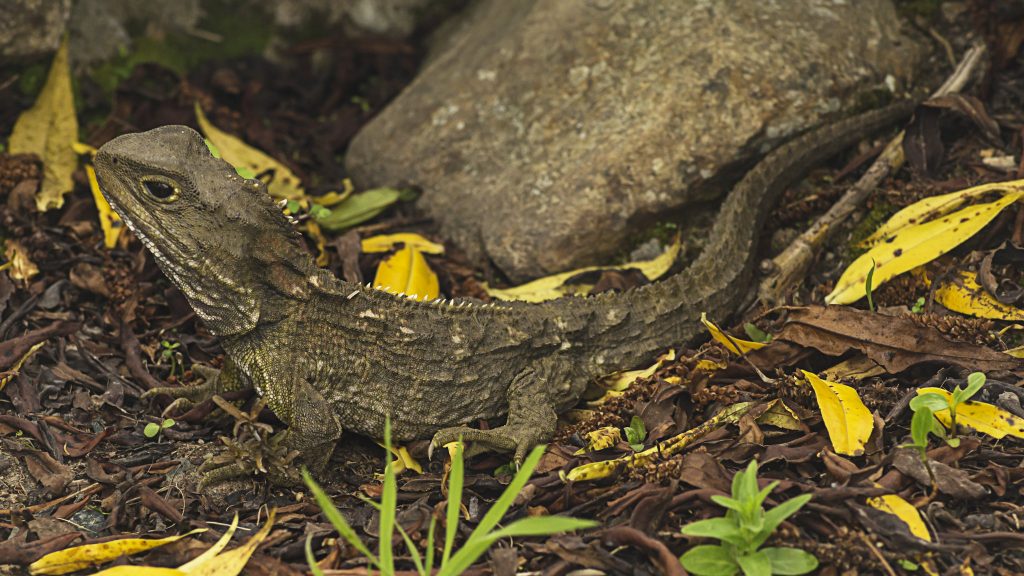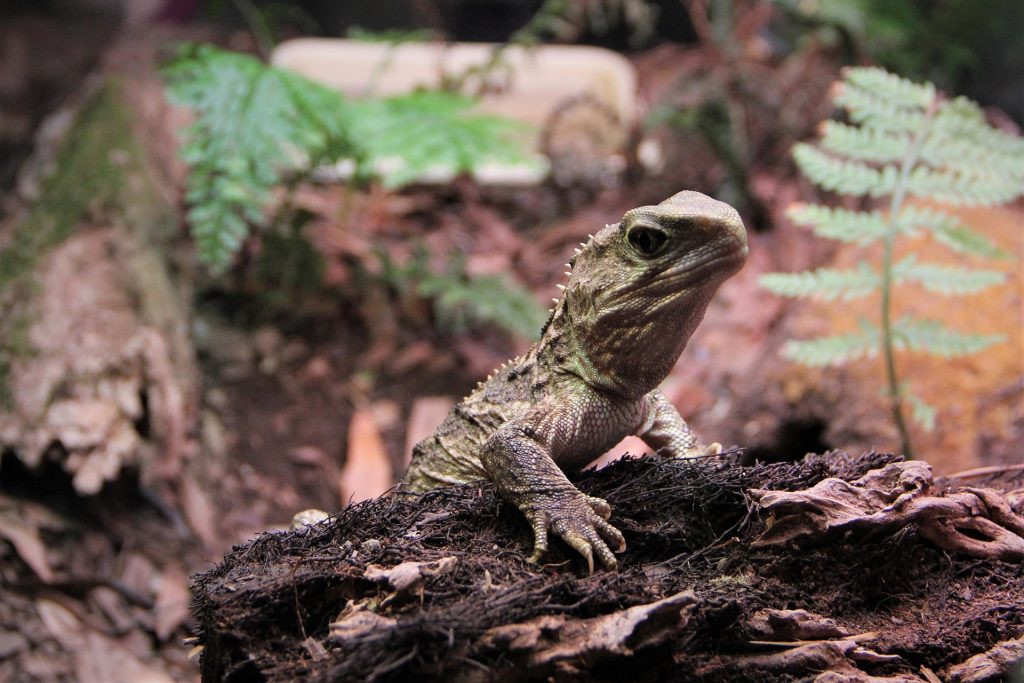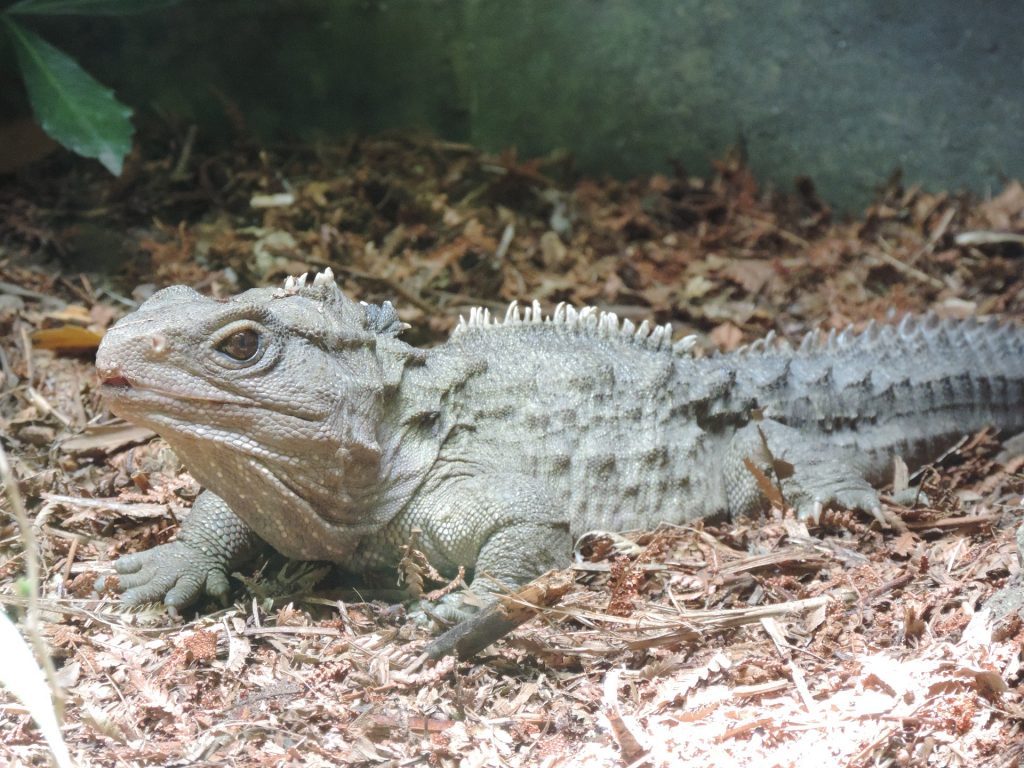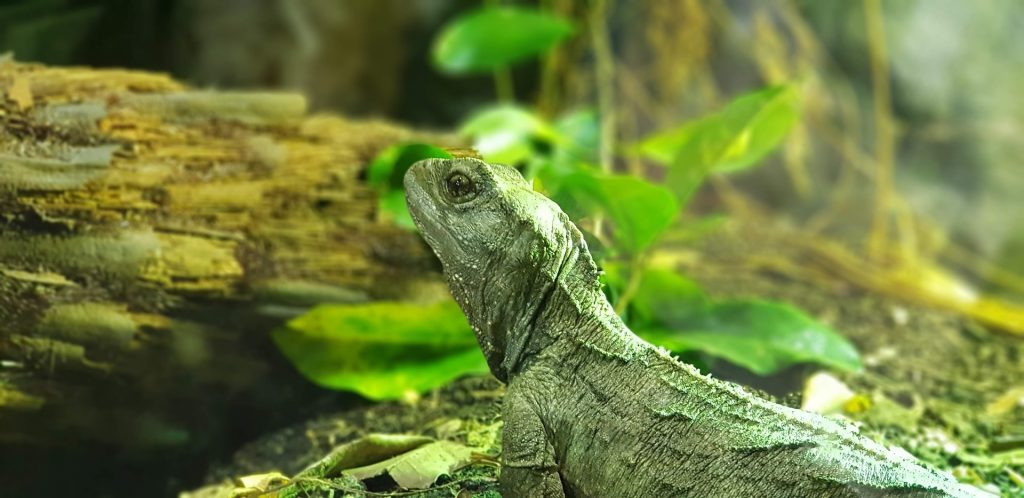
Tuatara are reptiles belonging to the species Sphenodon punctatus. Biologists are very interested in this animal due to its uniqueness and history. Tuatara look like lizards, but they are much more different. They are the only surviving members of the order Rhynchocephalia, which was represented by many species around the world, about 200 million years ago, the age when dinosaurs were present on our planet. About 60 million years ago, though, the other species of the order started to decline and eventually became extinct, with tuatara being the only survivors. Since then, tuatara have not changed much, and because they date back in ancient times, they are often characterized as living fossils. They are endemic species in New Zealand, and their closest relatives are lizards and snakes.
Genomic analysis
The sequence of the tuatara genome revealed something that scientists have not come across in any other species. It seems that their genome is 50% larger than the human genome, and it also contains characteristics found in reptiles, birds, and mammals, making tuatara a unique combination of these three groups of animals.

Morphology
The male tuatara can grow up to 50 cm in length and weigh about 1.5 kg. Tuatara skin can vary from green to brown. They shed their skin once every year. The word tuatara means ‘spiny back’ in Maori. This is because tuatara have spines on their backs that are made from folds of their skin. These peaks are bigger in males and are used to attract females or to fight to protect their territory. Tuatara are nocturnal animals as adults. However, their young are active during the day to avoid being eaten by adult tuatara at night. They also hibernate during winter.
There is a single row of teeth on their lower jaw and two rows of teeth on their upper jaw, another unusual characteristic. If the teeth get broken, they cannot be replaced. This is why old tuatara have to change their eating habits and start eating soft worms and larvae instead of hard insects.
In addition to the two eyes they use for their vision, they have a third eye called parietal eye, on the top of their head. The parietal eye is covered in scales and pigments at around four or six months of their lives, so it is only visible on the young. Scientists are not sure what the parietal eye does. Perhaps it absorbs ultraviolet rays for the production of vitamin D or is used for the regulation of circadian rhythms by detecting day and night.
If predators catch their tail, they can break it off and regrow it later.

Lifespan and reproduction
Tuatara keep growing until they reach 35 years of age, and they can live up to 100 years. However, the average lifespan is 60 years. The reason behind their longevity is probably the fact they have a slow metabolism. Their reproductive process is also slow. They become sexually mature around the age of 10 to 20. But females can only breed every two to five years. This is because they require 1-3 years to prepare eggs containing yolk and another seven months to make the egg’s shell. After fertilization, it takes 12 to 15 months for the hatchling to be born. The hatchling’s sex is determined by the soil’s temperature.
Predators
Tuatara used to live in the isolated mainland of New Zealand without having developed defenses against predators such as mammals that were absent from these regions. However, when humans started arriving with their boats and ships, they brought mammals like dogs, cats, and pigs. As very often happens, rats came along with them. Among the invasive species that came to New Zealand, rats were the most serious threat to the tuatara. They started eating their eggs and hatchlings, and they even competed for invertebrates that tuatara used to dine on. Given that tuatara are slow breeders and that rats killed their young, tuatara were in danger. Their population started to decline.

Conservation
Since the tuatara were in danger of extinction, the New Zealand government protected them by law in 1895. They had to protect tuatara from being shipped to museums or for private collections far from their natural environment. Efforts were also made to eradicate the rats from the tuatara islands. Other measures, such as collection and incubation of eggs were taken as well. Although many efforts had been made, tuatara were extinct on the mainland and were present on only 35 islands. Tuatara are now held in captivity to breed in a controlled environment, with some of them being released to their natural habitat. After many years of protection, in 2005, some tuatara were released into a sanctuary, and in 2008, the first tuatara nest was discovered on the mainland of New Zealand. Today, we can find tuatara on a number of islands of New Zealand and in sanctuaries on the mainland. However, there are still threats that could harm the survival of this species. For example, global warming could lead to too many male tuatara being born since sex is determined by temperature. This would cause an imbalance, preventing them from reproducing effectively. However, the International Union for Conservation of Nature (IUCN) now classifies the tuatara as of least concern regarding their need for protection.
Sources:
https://www.doc.govt.nz/nature/native-animals/reptiles-and-frogs/tuatara/
https://media.newzealand.com/en/story-ideas/tuatara-new-zealands-living-dinosaur/
https://www.sciencenewsforstudents.org/article/explainer-how-invasive-species-ratted-out-tuatara
